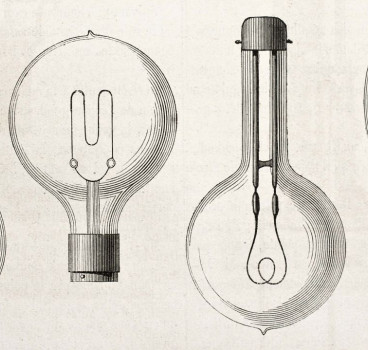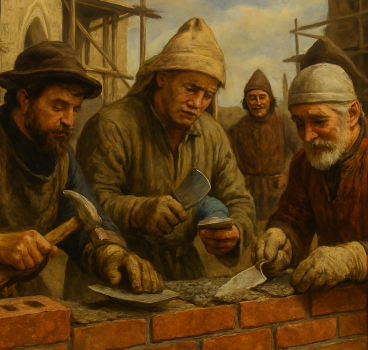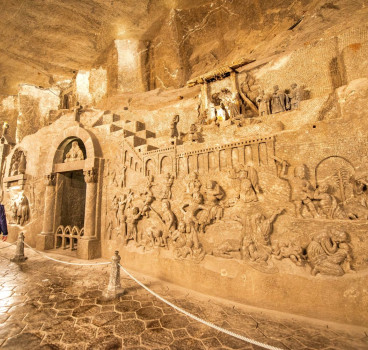Exploring superstitions in modern construction
It would seem - that even in these modern times – many in the world of construction - still believe in ancient superstitions and folklore. The evidence is all anecdotal, of course, but our team at Talk.Build thought we should take a look at some of these enduring traditions. We think you will be surprised by what we found.
Superstitions in construction are not confined to a specific region. They exist across the globe, reflecting cultural beliefs by offering a sense of comfort and control in an inherently unpredictable environment.
The horseshoe, for example, is a ubiquitous symbol of good luck across cultures, and construction sites are no exception. In Ireland, for instance, a horseshoe is often prominently displayed at the entrance of a building project, a nod to the country's rich folklore and a wish for a safe and prosperous build. Similarly, in parts of North America, horseshoes are sometimes embedded within the foundation of a building, offering a permanent charm for good fortune throughout the project's life cycle.
Avoiding the number 13 is called triskaidekaphobia. The fear of the number 13, is a widely acknowledged phenomenon and in construction, this can manifest in the omission of the number 13 for floor numbering in some buildings, particularly in high-rise structures. For example, The Empire State Building famously skips the 13th floor, labelling it "14A" to appease tenants and visitors wary of the number
Tossing coins onto the foundation of a new building is a tradition observed in various parts of the world. In India, for example, workers might throw coins made of specific metals like copper or silver, believing it brings prosperity to the future occupants and ensures a smooth construction process

In Germany, there is a tradition called the Richtfest, a topping-out ceremony held when the highest point of a building is reached. Workers raise a decorated tree, symbolising the building's growth, and share a celebratory meal to mark the milestone. This custom blends elements of pagan beliefs about trees with the celebration of human achievement in construction
The psychology behind the practices
You have to ask yourself why these superstitions still persist in an industry driven by logic and technical expertise? There are several possible explanations, one being the need to retain a sense of control.
Construction projects are inherently complex and can be subject to unforeseen delays or accidents. Superstitions may offer a way for workers to exert a sense of power over the uncontrollable, providing a psychological buffer against potential challenges.
Engaging in shared traditions like throwing coins on the foundation or celebrating Richtfest may also foster a sense of camaraderie among workers. These rituals become bonding experiences, strengthening team spirit and creating a more human element within the often-demanding construction environment.
However, we at Talk.Build think it has more to do with a respect for tradition. Some construction practices have been passed down through generations, becoming ingrained in the industry's culture. Younger workers might adopt these traditions out of respect for their predecessors, even if they don't necessarily hold a personal belief in the associated superstitions.
Evolving with the industry
That said, it's important to note that superstitions in construction are not static. As the industry embraces new technologies and methodologies, new traditions might emerge. For instance, the concept of a "virtual topping-out ceremony" might arise, utilising video conferencing to celebrate milestones in geographically dispersed construction projects.
We also have to ask ourselves will superstitions vanish entirely as the construction industry becomes increasingly data-driven and technologically advanced? The answer is likely no. Superstitions offer a human touch to a technical field, and their existence alongside cutting-edge technologies highlights the multifaceted nature of construction work.
However, while some might dismiss construction superstitions as mere quirks, they can also serve practical purposes beyond attracting good fortune. Certain superstitions, for example, can act as indirect safety reminders. For instance, the belief in avoiding walking under suspended loads, or ladders, encourages workers to be more aware of their surroundings and potential hazards overhead.
A look at modern superstitions
The realm of construction superstitions is, however, not just limited to age-old traditions - a few modern practices are also emerging. We are seeing for example, the "Tool-ocalypse" Myth. This tongue-in-cheek superstition refers to the fear of a sudden shortage or price hike of essential tools and materials, potentially disrupting project timelines. This light-hearted belief highlights the importance of proper material management and contingency planning.
Then there is the "Leftover Materials Challenge." Construction inevitably generates leftover materials. A resourceful crew might turn this into a challenge, finding creative ways to repurpose leftover wood scraps or bricks into functional objects or even small art installations on the site. This not only reduces waste but also fosters a sense of innovation and resourcefulness.
We might also see the digital tossing of coins. As virtual reality (VR) becomes more integrated into construction planning, a digital version of the coin-tossing tradition might emerge. Workers could "virtually" toss coins on the foundation of a building model in VR, offering a symbolic gesture of good luck within a technologically advanced environment.
We can also imagine a future where Augmented Reality (AR) glasses display a lucky horseshoe symbol whenever a worker enters a potentially hazardous zone on a construction site. This could serve as a visual reminder to prioritise safety while incorporating a familiar element of superstition.
The presence of superstitions in construction highlights a fascinating balancing act between tradition and progress. These traditions offer a window into the human element within this technical field, reminding us that even the most advanced projects involve people with hopes, anxieties and a touch of belief in the extraordinary.
As the industry continues to evolve, these superstitions might adapt and transform, remaining a testament to the enduring human desire for control, camaraderie and a touch of good luck in the face of complex challenges.
Additional Articles

The electrifying birth of power in construction
There’s a moment in every great story when the lights come on - quite literally. Electricity was here for the first time and it did not just illuminate our homes - it rewired the entire DNA of...
Read moreThe strange nicknames for construction trades through history
Construction has always been a world with its own language. Walk onto a building site today and you’ll hear slang that outsiders struggle to decipher, from “sparkies” for electricians to “chippies”...
Read more

Buildings made of salt and why it’s possible
When we think of building materials, we tend to picture stone, timber, steel, concrete, or glass. Salt, on the other hand, conjures images of dinner tables and seaside breezes rather than walls,...
Read more